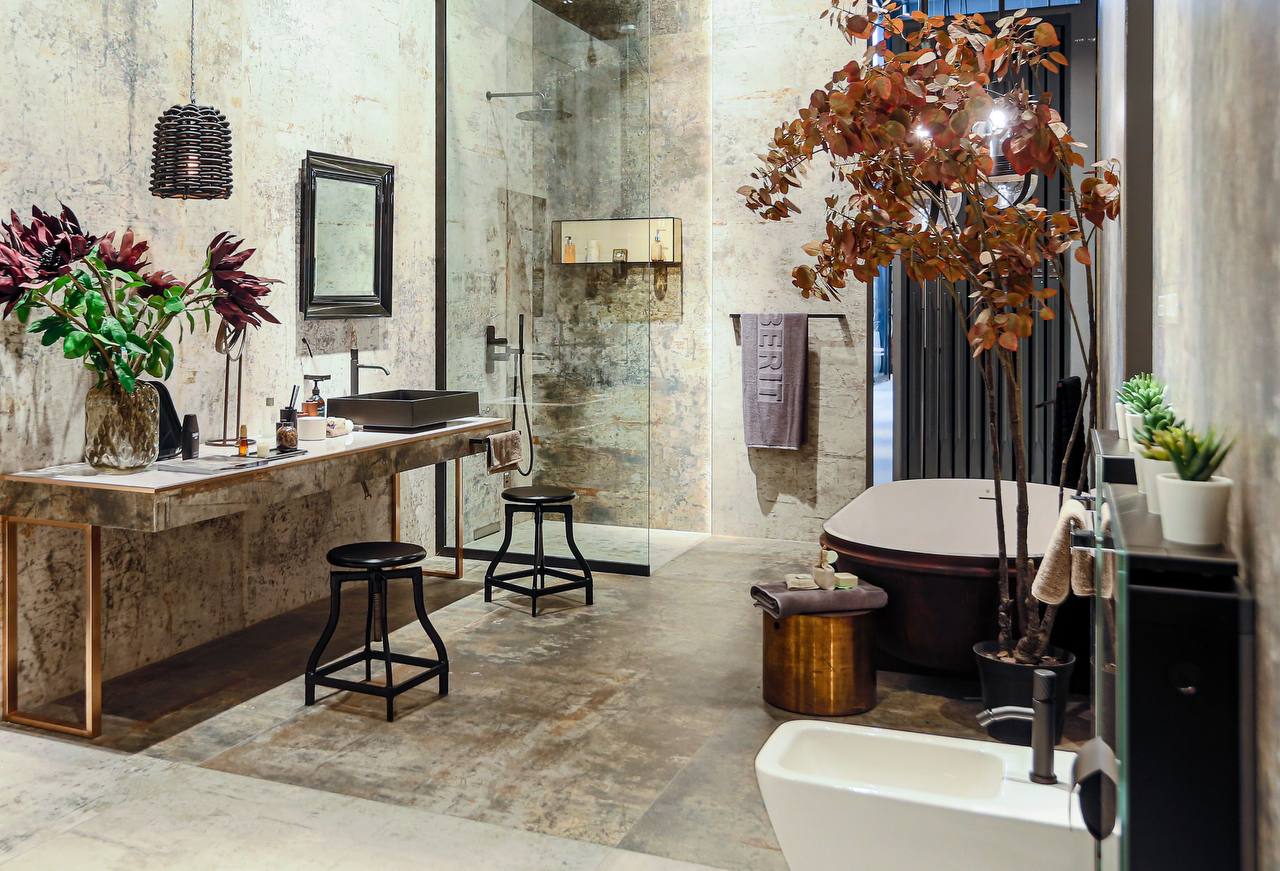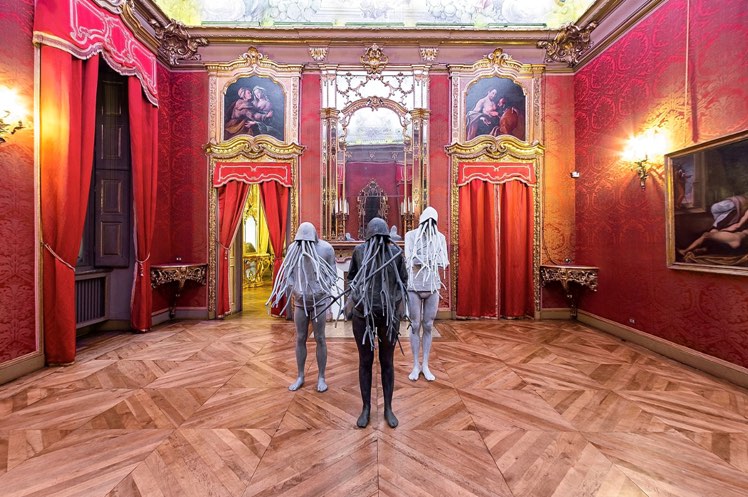“There is something in the human spirit that will survive and prevail, there is a tiny and brilliant light burning in the heart of man that will not go out no matter how dark the world becomes.”
Leo Tolstoy
I was in Beirut at the time of the explosion on August 4, 2020 at 6:08pm. I remember what I thought, what I felt, what I heard, and what I saw. I knew right away by the experience of it that it was an explosion. In the aftermath I reached out to all my friends, family and contacts, and over the next hours and days, stories were exchanged.
The explosion took place at the port of Beirut. It is reported to be one of the largest non-nuclear explosions in modern history. At least 200 deaths were recorded, and over 6,000 people were injured. Houses and properties were destroyed leaving around 300,000 people homeless. The areas most affected were Gemmayze, Mar Mikhael and Achrafieh, some of the most cosmopolitan areas in Beirut.

Photography by Maie El Hage
Reporting about the blast more than 2 months after was a duty that called to me, albeit late. I could not begin to research it until I had visited the areas and my friends’ homes and businesses,evaluated the extent of the damages, and embraced the tragedies. I listened to the stories and saw the damages. At some point I pointed a camera at what I saw. The process was a mixture of sad storytelling, reporting, listening, understanding and off-the-record exchanges. At one point, I felt it is time to write.
Photography by Maie El Hage
For this article, I interviewed artists, gallerists, architects and art institutions, relaying their experiences but also their visions for what is ahead. My article here includes a look at the damages sustained by galleries in Gemmayze, Achrafieh, Mar Mikhaeland Clemenceau, and the destruction is not only material but also humanitarian. Saleh Barakat Gallery lost to the blast one of their staff members, Firas Dahwiche (1977 – 2020). GalerieTanit lost a friend and the architect of their building, Jean-Marc Bonfils (1963 – 2020) who was also my professor at the American University of Beirut. The former owner of Letitia Gallery Annie Vartivarian lost her daughter to the blast, the young and lovely Gaïa Fodoulian (1991 – 2020), who was aspiring to become an art dealer. There are many other such tragedies, but these are the ones closest to home.
Beirut Tragedy
Saleh Barakat Gallery
“It was really an apocalyptic blast that affected every single person in Beirut directly and indirectly and on all levels. Maybe half of the city was destroyed,” says Saleh Barakat, owner of Agial Art Gallery and Saleh Barakat Gallery, located in Hamraand Clemenceau, Beirut respectively.
photo credit: Saleh Barakat Gallery
“On the city level, I think that Beirut as a platform of plurality of multi confessionalism, of multi ethnicity, of diversity, this city which embraces the culture of tolerance and living together, this hub of creativity and art got a very, very big hit. Because in fact the city of Beirut is built around a port which is its door towards the rest of the world, and most of the cosmopolitan area are around the port, so the massive destruction has affected basically the neighborhoods where most of the artists and creative people and the people who believe in pluralism live.”

Photography by Maie El Hage
Saleh Barakat’s gallery was severely damaged, as was his home, but most importantly he lost his staff member, Firas Dahwiche, who was his collaborator for the past 20 years. The tragedy echoes across other stories felt around the city.

Photo courtesy Saleh Barakat Gallery
In regards to the tragedies “So we are seeing this, we are still feeling the effects,” relays Dr Ralph Hage, a professor and an artist. “Actually I think the effects are just starting, this is not something that has ended. The effects of this are going to be felt for a very, very long time.” Ralph’s family home in Achrafiehwas basically destroyed, and he also suffered the personal loss of people he knew.
Art on 56th Gallery
Noha Wadi Moharram, owner and founder of Art on 56th Gallery, an independent visual arts gallery located in Gemmayze, was in her gallery at the time of the explosion. At the time, Lebanon was in a lockdown, and the gallery was open only by appointment. Noha shared with me the experience after first hearing the blast: “Something like a big vacuum carried me and threw me in the corner where it was safe for my face and body but my legs were injured.” After frantically finding her team member and clients who were also injured, they went outside, searching for a vehicle to be able to go to the hospital. “It took us like awhile to just grasp what happened. Then we went outside, I couldn’t secure anything; doors were open, we had no doors basically, no windows either. And then we went out and we saw a big picture. It was really like a war zone.” Her car was damaged, so they searched for a motorcycle to take them to the hospital.
Photo courtesy of Art on 56th Gallery
It was several days before Noha could even return to the gallery, and she had to rely on a close friend to secure the premises as soon as he could. Noha had to undergo surgery, and like many of us here in Beirut, experienced the blast as a traumatic shock.
Sursock Museum
Sursock Museum, a renowned heritage museum building with an impressive collection of Lebanese art and art from the region, also suffered severe damages.

Sursock Museum Level 2 Collection2 Display Sept. 2018 by Christopher Baaklini 
Sursock Museum Level 2 Collection2 5August 2020 by Rowina BouHarb
“Regarding the damage, the museum is situated only 800 meters away from the blast site. So as you can imagine, there was considerable damage,” says Muriel Kahwagi, Head of Communications at Sursock Museum.

Sursock Museum hallway Level 1 2015 Photo by Nabu Productions 
Sursock Museum hallway Level 1 5August 2020 Photo by Rowina BouHarb
“All the windows were shattered, including the stained glass of the façade. All the doors, including fire-proof doors and metallic doors, were blown away.

Facade of Sursock Museum 2015 by Claire Henry courtesy Sursock Museum 
Facade of Sursock Museum Aug5 2020 by Rowina BouHarb courtesy Sursock Museum
57 artworks that were on display (out of a total of 132) were damaged. The underground floors sustained damage that was less severe, but nevertheless, all four underground floors were damaged. Thankfully, the storage space on Level -3 was not impacted, although there was dust everywhere, so we have to dust the entire collection.”

Sursock Museum Level 2 Collection Display Sept. 2018 by Christopher Baaklini 
Sursock Museum Level 2 Collection 5August 2020 by Rowina BouHarb
The damage to the artworks mentioned is a great loss, as Sursock’s collection is invaluable as part of the heritage of art in Lebanon.
Artist Perspective
As a Lebanese artist with direct and profound links to Beirut, Wissam Melhem turned to the cathartic experience of releasing his sadness unto his drawings.

“As an artist.. I always imagined myself in the head of a witness, that day August 4,” Wissam shares. “As a citizen, a kind of perspective, somebody who can’t imagine or even believe this ever had happened. Actually silence reigned and sadness inhabited my thoughts for weeks, and still till now. I’m currently seeing the city as a black and red dot, invading my drawings actually. Everything turned black and red. I became too stunned to draw. There was shattered glass everywhere and tiny bits of dust and debris floating in all my sketches.”
Galerie Tanit
Galerie Tanit, located in Mar Mikhael, suffered severe damages, both material and humanitarian. Naila Kettaneh-Kunigk, the gallery’s founder and director, details her and her staff’s experiences and the loss of lives: “There were four fatalities in the building including our beloved friend Jean-Marc Bonfils,” she says.

photo by © Kinan Mansour
“The gallery was totally destroyed, the sight of it shook us all honestly, and going out to get help was even more horrific, apocalyptic.” Mourning the loss, and picking up the gallery’s pieces, was painful, and yet, something did uplift Naila.

photo by © Roy Dib
“During the aftermath, I was absolutely encouraged by all those young people who rushed to clean up, I did not expect anything less from the youth of my country,” shares Naila.
Nonetheless, the fact remains that, as she also states, “Rebuilding is another story.”
The Healing Process
I took several walks in Gemmayze and Mar Mikhael after the blast, some more urgent than others. On a warm September afternoon, Dr Ralph Hage joined me for a reflective walk and we passed by 392Rmeil393 Gallery where Ralph exhibited earlier this year. We talked about his vision for his artworks in the future.
“Well as an artist it led me to a revaluation of the projects I am working on,” Ralph reflects. “Including a tendency to link what I was doing, which was more on the level of cosmology, towards something more related to human society. I felt the profound need for it. This would direct me towards something which is called “big history” essentially linking the cosmological with the sociological.”
Many artists feel that moving on from the blast would require strong will and reimagining of the place of art in Lebanon after August 4.
Between August 4 and September 25, 2020, artist Abed Al Kadiri decided to intervene directly into the site of the blast, into the fabric of what was left of Mar Mikhael. “Today, I would like to be a Tree” was a project, a mural, realized by Abed at Galerie Tanit, with the windows still bare from the shattered glass.

photo by © Laetitia Hakim o
“Today, I would like to be a Tree” is an attempt to counter the devastation we feel after the Beirut port explosion,” shares Naila Kettaneh-Kunigk.
I asked Abed about the inspiration and the will behind this work of art. Below is his statement.
Abed Al Kadiri:
“I conceived this project as a constructive reaction against the feeling of suffocation. Be it suffocation from the recent pandemic, Lebanon’s economic/political situation, or the world’s biggest non-nuclear explosion. Observing the pain surrounding me, I had a recurring thought: I wanted to be a tree. The tree is an alternative, perhaps even an antidote. It protects, although shaken by ravages. Its roots embrace the earth from which it has sprung, in a reciprocal life force loop. A landscape of trees—serene and unflinching—stands as a counterforce to the conquering shocks that wrought their stinging havoc. The tree endures. And by enduring, heals. I want to be a tree that of such power that it can even erase the harm. This landscape metamorphosed onto the walls of Galerie Tanit—the very walls on which hung my latest exhibition, the very walls obliterated by the explosion. The gallery, now a (forced) open space, hosted the creation of two murals painted on eighty cardboard panels. I drew trees—the trees of Beirut, the trees of my utopic dreams, the trees of change. The cardboard panels were then sold; all proceeds were credited to a relief fund held by Bassma to help reconstruct the Beiruti homes of those who are most in need. It is a Tribute to One and Many. This body of work is first and foremost a tribute to the memory of the architect, our friend, Jean-Marc Bonfilswho played a major role reviving Lebanon’s heritage, and built landmarks in our beloved Beirut. It is also a tribute to all the people and friends who fell victim to this massacre.The explosion has left us broken, mourning our losses; From beloved individuals, to places engraved in our memories, to our treasured Beirut as we know it. Most strenuous of all is how, in a matter of seconds, this event robbed, or even worse, annihilated the dreams of a nation—mine included—as we witnessed our capital reduced to rubble. Today, I would like to be a Tree is an attempt to overcome.”
Hope for Lebanon
We all want to overcome. We all want to move forward. We are still mourning, maybe we will always mourn, but this is our Beirut and we need to fight for her.
“We need to move forward. This is life,” states Saleh Barakat. “We started with the renovation and we practically finished it. And we are going ahead with our programs.”
“We are collaborating with artists who express their desire to show, right now, actually, despite of and against all odds. We know that people are not in the mood of going out, there is a lot of tragedy around. But those artists believe that it is in times like this that they should share their experience in art. So we are very excited about that because it will allow us to start again slowly but surely.”
And indeed, on 8 October 2020, Bassam Kahwagi’s art show “To Have Been Built” opened at Agial Art Gallery in Hamra, to what I felt was a tranquil but hopeful Beiruti crowd. This exhibition is running until 7 November 2020 and will be followed by an exhibition for Hiba Ezzeddine. Also, currently at Saleh Barakat Gallery, Clemenceau, Serwan Baran’s “A Harsh Beauty” is on display and will be followed later this November by an exhibition for Hiba Kalache.
Art on 56th Gallery in Gemmayze is currently under renovation. The new doors and windows have been installed, and the interior has new tiles. Soon, the paintings will be mounted on the walls once again. Noha Wadi Moharram is hoping to reopen soon to an exhibition titled “Rebirth,” which will be a group show of the artists she collaborates with.
As of 14 September 2020, the international organizations ALIPH, ICOM and ICOMOS launched a joint effort to rehabilitate and restore the Sursock Museum.
Already, the sum of 500,000 USD has been received from ALIPH to help secure the building by installing new doors and windows. In addition to rehabilitating the building, much of the collection is being restored.
Many of the gallerists I spoke with hope to draw attention to the Lebanese art scene from abroad.
“I am definitely considering working more outside of Lebanon, to promote Lebanese artists internationally,” shares Naila Kettaneh-Kunigk.
“I would love to see people supporting Lebanese artists, buying some of their works, not only for charity but also to help them get back on their feet and help the Lebanese cultural sector that has suffered immensely.”
Of those who share this vision, Annie Vartivarian of Letitia Gallery is launching her online gallery Art Design Lebanon (AD Leb) in the upcoming months, in the hopes of bringing attention to Lebanese art and artists and showcasing Lebanese and regional talent. AD Leb will also feature the Gaïa Fodouliancollection of product designs, in limited editions. This tribute continues the efforts that Gaïa had started earlier this year, and also provides funding for a Foundation in her honor, one dedicated to realizing one of her dreams, helping animals.

photo courtesy of Stephanie Ghougassian
Artist Wissam Melhem shares the timelessness of his connection to Beirut: “I start day after day to develop strong relationships with this country. Yes, my love to Beirut is substantial, my love to Beirut actually is distinct and everlasting. And that inspires a sense of unique meaning and timelessness that will or always have been and will be reflected in my future art projects.”
We, as artists, as curators and as the artistic actors of the community of Beirut, also have a duty to our city to move forward, to reassert our convictions and to continue to produce the culture and life of Beirut that has long been a part of her identity.
Saleh Barakat sums up the act of moving forward as an existential effort, “We need to defend our mission and our space of liberty in this city.”
And finally, I would like to conclude with some reflections from Beirut-based architect Karim Nader, whose office in Arz street, Saifi, was destroyed in the blast.

photo (c) by Marwan Harmouche
“I have already started to dream the new Lebanon that will follow this now totally depleted one”, Karim Nader states, “I will joyfully participate in its reconstruction.”
Karim rightly claims that, after destruction, rebuilding does not mean restoring to the former glory, the former self. Much of what has been destroyed cannot be rebuilt. Inevitably, there will be new grounds, new buildings, new places.
Karim describes the process as he envisions it:
“Picking up the fragments fallen on the ground, we will dust them out and try to figure out the exact location of every remaining puzzle piece. But the fragments are in exquisite disorder and many pieces will forever stay missing. In those gaps, we will repair with pure gold, like in the art of kinstugi. We will accompany the citizens in their aspirations for a better tomorrow through the reconstruction of an even more beautiful Beirut, one that has transcended the ruin of a past now lost forever.”
Beirut has captured the attention of the global community. Many of her residents have left, but to all who once knew her, who once saw her, or who spent lifetimes in her streets, she is alive and will remain alive. My call to my readers is not to forget Beirut, and to continue to hope with us, and to keep the attention to the actors who are working to recreate Beirut with all her combined identities, her beauty, her culture, her life and her legacy.
November 4, 2020
Written by Maie El Hage






















